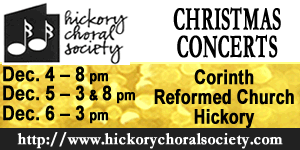Harry Davidson, music director of Duke University’s Symphony Orchestra, presented a program replete with colorful orchestral sounds and textures from the major historical style periods – eighteenth, nineteenth, and twentieth centuries – and also featured guest artist Rachael Elliott, the Music Department’s lecturer in bassoon, in the orchestra’s first major concert of the 2014-15 season.
The full orchestra, about 110 strong, crowded the capacity of the stage. With his uncanny sense to unify his heart with those of the players, Davidson’s keen ability to sculpt musical phrases so beautifully and to communicate his dynamic interpretation with clear gestures to the players stands at the center of this orchestra’s excellent performance. His skills in assembling a captivating selection of works for a program point toward another success in this concert.
Though half of the students entered the stage only about a minute before the concert in Baldwin Auditorium was to begin (even then projecting an air of attending a party), they quickly turned intense concentration to the task at hand under the baton of their conductor.
In Duke Music Department‘s continuing celebration of the 300th anniversary of C.P.E. Bach’s birth, the program opened with Bach’s Symphony in B minor, Wq 182/5, part of a string symphony set that may have influenced Mendelssohn’s early string symphonies. Bach enjoyed the opportunity to write for the Kenner (connoisseur), whose advanced musical skills could handle more difficult music. Such was the case with the six symphonies in Wq 182. The student musicians infused the outer movements of this energetic piece with their vitality. The violins made the fast 32nd notes sparkle in movement one, all left-hand fingers synchronized. The violas, cellos, and basses were equally challenged in movement three. Throughout, however, one wished at times for a little more lightness with the bows for a more delicate rendition. With Davidson precisely indicating sudden changes in dynamics and phrasing, the players’ responsive attentiveness brought the marks on the page to life. The second movement flowed distinctively with beauty.
The depth of the rich, powerful tone of Tomer Duman, principal flutist and a Ph.D. research scientist at Duke, riveted my attention as he carried the solo line in the calm spirit of the “Dance of the Blessed Spirits” from Gluck’s mid-eighteenth-century opera, Orfeo ed Euridice. A second selection from the same opera, “Dance of the Furies,” scored for strings, was indeed, every bit as furious as the title suggests, again with the players quite in command of all the notes they played with vigorous intensity. The evening’s program shows that Gluck, like C.P.E. Bach, was also born in 1714, and likewise pays homage to Gluck’s 300th birthday anniversary.
With Anatoly Liadov’s warm tones expressed in his Eight Russian Folksongs, Op. 58, he employed tonal colors through the sumptuous orchestral scoring of the late Romantic period. The Russian Imperial Geographical Society formed a committee, which included Liadov, to find folk music indigenous in selected Russian areas. The creative compositional writing in these songs, full of surprising harmonies and unusual twists and turns, often communicate a sense of humor. They seem to reflect the cultural varieties found among these ethnic groups and their locales. Liadov shifts the focus of orchestration to different groups of instruments within the orchestra. The “Christmas Carol” featured principal bassoonist Amy Kramer, who spins a very beautiful tone. The “Plaintive Song” highlighted a portion of the cello section, whose players have fine training to draw very special sounds out of their instruments. Melts the heart. The short “Humorous Song,” executed very well by flute, piccolo, and violins, had notes and rhythms that fluttered (trilled) and danced. The “Legend of the Birds” tossed trills around groups in the orchestra, rather reminiscent of Vivaldi’s “Spring” Concerto, movement 1. The piccolo player so ably navigated the passagework with a clear tone in “The Round Dance.” The printed program indicates that this is the 100th anniversary year of Liadov’s death.
Following intermission, Rachael Elliott performed Mozart’s Bassoon Concerto in B-flat, K.191, with unusually exquisite tone and refined musicianship. The ease with which she shifted between the low and high registers underscored her mastery of the evenness of her velvety sound. Her body swayed almost imperceptibly to and fro, reflecting the ease she has with the instrument. She shaped the cadenzas with taste for dramatic interest. Elliott’s main performance focus lies in new music. Sometimes one had to strain to hear the bassoon for the violins covered Elliott’s sound on occasion.
Stravinsky’s Suite from L’Oiseau de feu (Firebird) closed the program. Davidson deftly steered his forces through the many tempo and mood changes of this fairy story ballet, and the players responded well, with good solid counting from the ominous opening Introduction to the Final, with its block chords. Principal cellist Bryant Hopkins and Amy Kramer are to be commended again for their special sounds in solos.
Davidson commented to the audience that both Liadov and Stravinsky studied with Nicolas Rimsky-Korsakov. The latter offered the job of composing the Firebird to Liadov, who accepted it but never completed it. Rimsky-Korsakov then passed the composition project to Stravinsky, a generation younger than Liadov. Stravinsky completed it in a few months. It is interesting to contemplate what Liadov would have done with Firebird, or what directions Stravinsky’s career might have taken without Firebird (1909). Would Petroushka (1911) or Rite of Spring (1913) have emerged in the forms we now know?
The Duke Symphony’s next full concert will be an all-Strauss program on December 3. For details, see our calendar.











